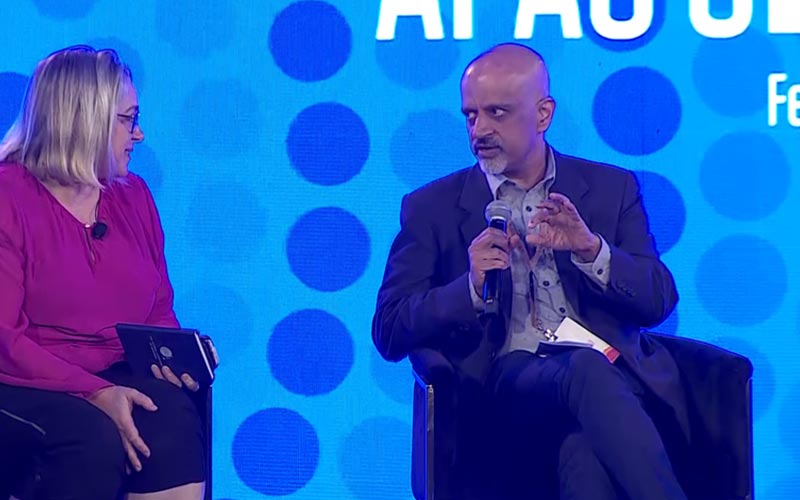
Un-learning. Re-skilling. De-centralising. The digital reality places prefixes on normals of the old enterprise way to make way for smarter ways. Navigating this clash of cultures isn’t easy. But if you’re open to embrace what’s different, all the reinvention becomes a natural state of being.
Claire Barber, CEO & Founder, Mattr scratched the surface of hyperproductivity at Confluence. Going deeper into the core of new cultural orders, she found three varied perspectives in the business of remaking a world of work: Jonathon Allaway, CTO, Temasek; Prof. Mohan Krishnamoorthy, Pro Vice - Chancellor Research, University of Queensland; and Deepak Padaki, EVP - Strategy, M&A and Chief Risk Officer, Infosys.

Key Takeaways

Doubling down on purpose
Dispersed teams, distributed models, disruptive technologies: it’s an increasing list of variables on the enterprise floor. When there are so many ways to work, there’s only one unifier: purpose. And that’s the lighthouse for every transformational ship in sail.

Turning the pyramid into a diamond
Flattening the organisation: easy to conceive, hard to implement. But what if going flat wasn’t the only answer? Imagine a diamond: a hierarchy of skills and controls that flow both ways. That’s fluidity without discarding an essential structural order.

Process busting: ringing out the old
What doesn’t fit doesn’t need to survive. The new digitised workplace is forcing a hard look at a cluster of processes, legacy and not-so-legacy. Some will be automated, others will be discarded, and new agile processes will emerge.

Many disciplines, all disciples of problems
Great minds don’t have to think alike. In the future, you could have a chemical engineer working with an anthropologist or political scientist in a team to frame solutions to problems. All they need to be united by is a quest for finding answers.
What's the creative confidence that you need to give people in agile teams who are used to working in project teams where the manager is taking the call?








